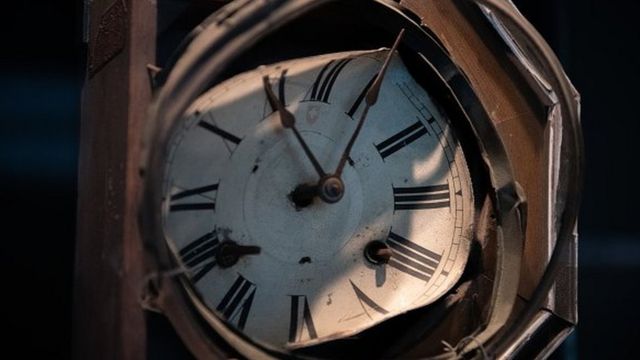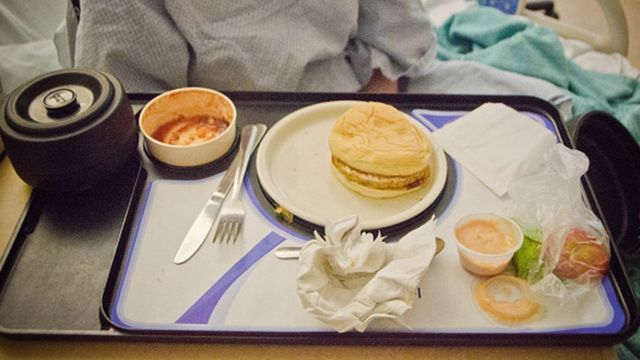The science news of the week: Hospital food (and we’re talking about a regular hospital, not a private clinic where they can bring you a very decent menu, although you’ll end up paying as much as for a meal in a Michelin-starred restaurant) is usually not capable of stimulating the appetite. After all, what can you expect from semi-prepared food purchased by the health care system at the most similar price, since no one has cut back. But if such food is not the biggest problem for the average patient, as an experiment by Swiss scientists has shown, for people with chronic cardiovascular disease, the difference between a hospital diet and a personalized diet can literally mean the difference between life and death.
About 650 people took part in the experiment. Half of them received a detailed consultation two days after their admission to the hospital from an experienced nutritionist, who adjusted individual daily norms for protein, micronutrients, vitamins and other nutrients and checked their condition every one or two days. They also received counseling on proper nutrition before discharge. Participants in the second group received no advice and conscientiously ate hospital food. About a quarter of the patients who received advice from a nutritionist died after six months (they had very serious illnesses). But in the group that did not receive counseling, the death rate was significantly higher – about a third. “Our research does not support specific dietary components,” the researchers wrote in the Journal of the American College of Cardiology. “Rather, they suggest that professional help from dietitians in achieving specific goals during patients’ hospitalization may benefit patients with chronic cardiovascular disease.” According to specialists, processed and fatty foods cause additional clogging of arteries, which increases the risk for people suffering from cardiovascular diseases. Therefore, such individuals, whether in the hospital or at home, should pay more attention to vegetables and fruits and reduce consumption of liquids and salty foods. The researchers admit that they did not check how the experimental patients ate after they were discharged from the hospital, but the results suggest that at least one of them was still following the dietitians’ advice.

We explain quickly, simply, and clearly what happened, why it matters, and what happens next. Episodes End of story. Podcast advertising.
When archaeologists in the 1960s discovered the 13,400- to 18,600-year-old Jebel Sahaba cemetery in the Nile Valley, they considered it evidence of perhaps the world’s first great armed conflict, the mother of all wars. However, a recent detailed study of fragments from skeleton 61, conducted by a group of anthropologists, ancient history specialists and geochemists from the French National Center for Scientific Research (CNRS) and the University of Toulouse-Jean Jaurès, casts doubt on this theory. According to the scientists, the remains in the cemetery are more likely the victims of numerous conflicts, possibly caused by the struggle for a favorable plot of land. The thing is, while the Nile Valley used to be rich in water, fish, and vegetation, by the end of the Ice Age, the Eastern Sahara had become an extremely dry and cold region, and the floods of the Nile became so unpredictable that there was almost no land left to settle on without fear of flooding. More and more hunter-gatherer tribes claimed these territories, and this could only lead to bloodshed.

In a quarter of the skeletons examined from the burial site, experts found traces of both fatal and long-healed wounds. This suggests that they participated in more than one battle. Most of the injuries were inflicted by spears or arrows, and the victims of skirmishes, ambushes, and raids included not only men, but also women and children. “Thus, we refute the theory that the Jabel Sahaba cemetery contains victims of a single major conflict,” the researchers wrote in a study published in Scientific Reports. “Instead, these were likely sporadic and repeated episodes of violence triggered by significant climatic and natural changes.” In fact, the history of mankind has witnessed many wars fought against the backdrop of severe drought and for the right to possess fertile land. There is another view, however, that the relationship between climate change and increased violence is much more complex, and that there may come a time when resource scarcity precludes the possibility of conflict by making war too expensive. Researchers say that in any case, the more we can learn about what happened at the end of the ice age in Jebel Sahaba, the better our chances of predicting how events will unfold in the future with the onset of abrupt climate changes.

What is the cost of increased accuracy? Increased entropy, or chaos, scientists say, because every movement of the second hand, every millisecond counted by atomic clocks, adds to global disorder. “If you want to make your clocks more accurate, you have to pay for it,” explains Natalie Ares, an Oxford physicist and author of a new study published in Physical Review. “Because every time you measure time, you increase the entropy of the universe.” In fact, as the second law of thermodynamics states, if the volume and energy of the system are constant, then any change in the system increases entropy. Entropy determines the linear progression of time from the past, where it was lower, to the future, where it increases. Mechanisms like clocks also generate entropy in the form of heat released into space. Scientists have already demonstrated that tiny quantum clocks, in which laser-cooled atoms oscillate at extremely even intervals, create more entropy the more precisely they run. However, it has not been possible to prove that more complex clocks with higher accuracy also increase entropy. “Clocks are a bit like little steam engines: you have to put effort into making them tell time,” Ares explains. “But to make them tick, you have to invest in the production of entropy.” To test this theory, the researchers created simplified clocks in the form of a 50-nanometer-thick membrane placed between two plates that cause the membrane to vibrate under the influence of electricity. By bending the membrane up and down for one cycle, scientists have shown that the stronger the electrical discharge, the more accurately and uniformly these improvised clocks run, but at the same time more heat is released into the system, creating more entropy. Perhaps if clocks did not produce entropy, they could easily go back, but the same entropy protects them from failure. “We cannot say this with certainty yet, but we have discovered that there is a relationship between accuracy and entropy for both regular and quantum clocks,” says Ares. In addition to the purely practical aspect of enabling the creation of ever more precise devices, the discovery by Ares and his colleagues paves the way for the application of large-scale thermodynamic laws to tiny nano-devices. “Today, we have such control over these devices and can measure them with such accuracy that we are literally rediscovering the laws of thermodynamics,” says Ares, “it’s like a new industrial revolution at the nanoscale.”

